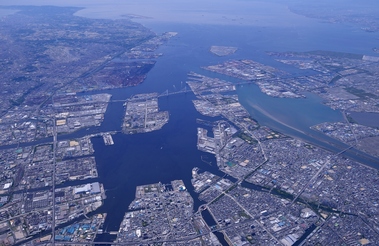Port Profile

Situated at the innermost edge of Ise Bay, which is located at the center of the Japanese Archipelago on the east coast facing the Pacific Ocean, the Port of Nagoya has steadily grown since it opened for international trade on November 10, 1907.
The Port is an integrated international port, handling all types of cargo (general, container, bulk, other). We are the largest port in Japan in terms of total cargo throughput, which reached 156.71 million tons in 2024.
We are proud that our port tops all others in Japan in terms of trade surplus value, which amounted to 8.6 trillion yen in 2024.
The Port's hinterland is home to Japan's automobile industry. We are the No. 1 automobile exporting port in Japan, shipping approximately 1.46 million completed automobiles annually.
The Port of Nagoya plays a major role as a point of entry to Japan, through its connections with approximately 170 countries around the world.
- Opened
- November 10, 1907
- Administrator
- Nagoya Port Authority (Independent local government body)
- Cargo Throughput
- 156.71 million tons (2024)
- Container throughput
- 2.76 million TEU (2024)
- Annual vessel arrivals
- 27,466 (2024)
- Main Trading items
-
- Export
Completed automobiles, Automobile parts, Industrial machinery, Steel materials, Miscellaneous chemical products - Import
LNG, Iron ore, Crude oil, Coal, Wearable items
- Export
- Main Trading Partners
-
- Export
China, U.S.A., Australia, U.A.E., Thailand - Import
Australia, China, U.S.A., Saudi Arabia, Canada
- Export
- Land area
-
43.0 million m²
- Water area
- 81.7 million m²
